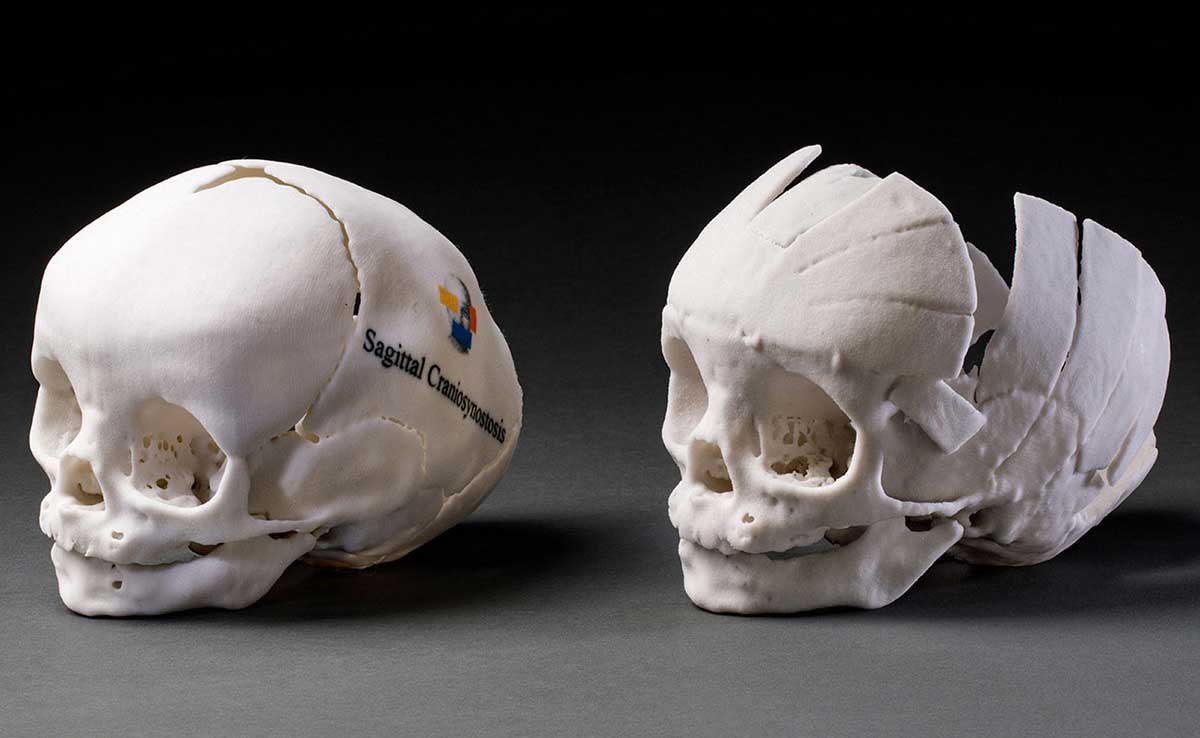Craniofacial surgeon
2018 Australian of the Year | South Australia
An accomplished and respected craniofacial surgeon, Professor David David has dedicated his career to treating patients with facial deformities and disfigurements. Since founding the Australian Craniofacial Unit in Adelaide in 1975, David has changed the faces and the lives of more than 17,000 people.
David's 3-D model nylon skulls
Professor David David and his team perform life-changing, often life-saving, surgery.
One of the conditions David treats is scaphocephaly. In these cases the sagittal suture – the connective tissue between the main bones of the skull – fuses prematurely, before adulthood. This leaves the sufferer with an elongated skull, which impedes the natural growth of the brain.
These 3-D models, created from patients’ pre- and post-operative CT scans, show how a skull can be reshaped with ray-like incisions. This enables the skull bones to reform, making a larger cavity for the brain.
Patient-centred
The approach to craniofacial surgery must be multidisciplinary. Teams need to be able to tackle whatever conditions they’re presented with. It has to be cradle to grave, with no distinctions based on age. It also has to be holistic and patient-centred, to look not just at the medical but the social aspects.
Precision in planning
The ability to produce accurate models that demonstrate the skull deformities is invaluable during pre-operative planning. Specialists can study the precise size, shape and malformation of the skull, enabling them to make crucial decisions before surgery.
All or nothing
There are a lot of people who want to do these things part-time, as a hobby, but it’s too serious and it’s too difficult and there’s too much at stake. It’s all or nothing, and you have to take a big deep breath and leave other things behind you. And that isn’t easy.

